This chapter will cover:
- An overview of oral health program infrastructure at the national, regional, state tribal and community level
- Examples of HP2010 planning models
- Roles and responsibilities for HP2010 teams
- How to recruit members for the team
- Tools for successful teams and meetings
Involvement of and support from leaders, officials, health officers, dental directors, health educators, political leaders, key policy makers and others at the state, territorial, tribal and local levels significantly improves and strengthens any HP 2010 oral health planning process. Effective leadership is necessary to inspire a shared vision and enlist appropriate partners and staff in the development process.
The suggestions and tools in this chapter can help you build a strong foundation for planning Healthy People 2010 activities and for forming oral health coalitions or workgroups. Implementation of plans and activities will depend on the unique characteristics of each state, territory, tribe or community.
Use the Oral Health Infrastructure Checklist and the HP 2010 Oral Health Self-Assessment in the Resources section to determine how much you already know about the oral health infrastructure in your state, territory, tribe or community, and what Healthy People coalitions and oral health coalitions already exist.
Oral Health Infrastructure
 Resources for implementing HP2010 oral health objectives go beyond dental professionals and oral health programs. Chances for success are increased, however, when implementation and tracking activities are coordinated by committed dental public health professionals. This section of the chapter provides an overview of the oral health infrastructure at the national, regional, state/territory, tribal, county and community levels. Web sites for the various agencies and organizations are included in the text and also on page 4 of the Resources section for this chapter.
Resources for implementing HP2010 oral health objectives go beyond dental professionals and oral health programs. Chances for success are increased, however, when implementation and tracking activities are coordinated by committed dental public health professionals. This section of the chapter provides an overview of the oral health infrastructure at the national, regional, state/territory, tribal, county and community levels. Web sites for the various agencies and organizations are included in the text and also on page 4 of the Resources section for this chapter.
Federal Government
 Federal agencies serve dental public health needs in a variety of ways. Oral health professionals and programs are primarily concentrated in the U. S. Department of Health and Human Services. An organizational chart depicting the major agencies and administrators can be viewed online at www.hhs.gov/about/orgchart.html.
Federal agencies serve dental public health needs in a variety of ways. Oral health professionals and programs are primarily concentrated in the U. S. Department of Health and Human Services. An organizational chart depicting the major agencies and administrators can be viewed online at www.hhs.gov/about/orgchart.html.
Secretary of DHHS advises the President, while the Assistant Secretary for Health is the senior advisor on public health and science issues to the Secretary. Offices significant to oral health that fall under the Assistant Secretary’s leadership and the Office of Public Health Science are:
Office of the Surgeon General: Dr. C. Everett Koop was a great supporter of oral health, and Dr. David Satcher released the first-ever Surgeon General’s Report on Oral Health in 2000. Dr. Richard Carmona, our current Surgeon General officially, released the National Oral Health Call to Action to Promote Oral Health to serve as a framework for generating oral health plans and activities at all levels.
Office of Disease Prevention and Health Promotion: works to strengthen the disease prevention and health promotion priorities of DHHS within the collaborative framework of the HHS agencies and serves as the lead office for the HP 2010 initiatives.
Other offices relate indirectly to promotion or tracking of oral health objectives:
- Office of HIV/AIDS Policy
- Office of International and Refugee Health
- Office of Military Liaison and Veterans Affairs
- Office of Minority Health
- Office on Women’s Health
The following agencies are key to federal policies and programs related to oral health. Those with an asterisk (*) serve in coordination roles for HP 2010 oral health objectives. Their Web sites are listed on page 4 of the Resources section, and some are described further in this chapter and in other chapters.
Administration for Children and Families (ACF): over 60 programs provide services and assistance to needy children and families; most important to oral health are some direct care funds, foster care programs and Head Start.
Administration on Aging (AOA): supports a nationwide aging network that helps seniors to remain independent, and provides policy leadership on incorporating oral care programs into community-based initiatives through Area Agencies on Aging.
Agency for Healthcare Research and Quality (AHRQ): supports cross-cutting research on health care systems, quality and cost issues, and effectiveness of medical treatments. Research on oral health services, especially performance indicators and measures of quality, help inform policy-makers and program planners on how to improve oral health and dental care services.
*Centers for Disease Control and Prevention (CDC): has the primary responsibility for supporting state and community-based programs to prevent oral diseases, for promoting oral health, and for fostering applied research. The Division of Oral Health is crucial to encouraging and tracking effective use of fluorides, dental sealants, and developing ways to collect, analyze and disseminate oral health data.
Centers for Medicare & Medicaid Services (CMS): previously known as the Health Care Financing Administration (HCFA), CMS administers the Medicare, Medicaid and State Children’s Health Insurance Program, which provide financing for medical and dental care serving primarily aged and indigent populations--about one in four Americans.
Food and Drug Administration (FDA): assures the safety of food and cosmetics, and the safety and efficacy of pharmaceuticals, biological products and medical devices.
*Health Resources and Services Administration (HRSA): helps provide health resources for medically underserved populations and supports a nationwide network of more than 650 community and migrant health centers, and over 140 primary care programs for the homeless and residents of public housing. HRSA also works to strengthen the health care workforce and maintains the National Health Service Corps. It serves other special populations through the Ryan White CARE Act programs and MCH Title V block grants to states, and cooperative agreements for national projects and centers.
*Indian Health Service (IHS): supports a network of 37 hospitals, 60 health centers, 3 school health centers, 46 health stations and 34 urban Indian health centers to provide services to nearly 1.5 million American Indians and Alaska Natives of 557 federally recognized tribes in 35 states. It employs over 400 dentists as well as allied dental health staff. Through PL 93-638 self-determination contracts, tribal health programs also administer 12 hospitals, 116 health centers, 3 school health centers, 56 health stations and 167 Alaska village clinics.
*National Institutes of Health (NIH): with 17 separate institutes, NIH is a premier research organization, supporting some 35,000 research projects nationwide. The National Institute of Dental and Craniofacial Research (NIDCR) provides national leadership in conducting and supporting dental and craniofacial research and training, and promoting science transfer and dissemination of information. In addition to basic research and clinical trials, NIDCR also supports state models for oral cancer prevention and early detection as well as centers for reducing oral health disparities.
A summary of the scope of essential public health services supported by agencies of the USDHHS is presented in Table 2.1. The US Departments of Defense, Transportation and Veterans Affairs, and the US Department of Justice’s Bureau of Prisons also provide dental care services, while the US Department of Agriculture administers the Women, Infants and Children (WIC) program that is increasingly serving as a link for prevention, early detection and referral of early childhood tooth decay in high risk children.
Table 2.1 Scope of Essential Public Health Services Supported by Agencies of the U.S. Department of Health and Human Services, and Level of Support | Essential Public Health Services | AHRQ | CDC | FDA | HRSA | IHS | NIH | CMS | ACF |
|---|
| Monitor health status to identify and solve community health problems | x | x | | | x | x | | |
|---|
| Diagnose and investigate community health problems | | x | | x | x | | | |
|---|
| Educate and empower people about health issues | x | x | x | x | x | x | x | x |
|---|
| Develop policies and plans that support individual and community efforts | | x | | x | x | | | x |
|---|
| Enforce laws and regulations that protect health and ensure safety | | | x | | | | x | |
|---|
| Link people to personal health services; ensure provision of care when otherwise unavailable | | | | x | x | | x | x |
|---|
| Ensure a competent public health and personal health care workforce | x | x | | x | x | x | | |
|---|
| Evaluate effectiveness, accessibility, and quality of personal and population-based services | x | x | | x | x | | x | x |
|---|
| Conduct research for new insights and innovative solutions to health problems | x | x | x | x | | x | | |
|---|
| Oral health component (FY 2000) ($ millions) | <1 | <10 | <3 | <150 | <80 | <250 | 2000 | <10 |
|---|
| Total agency budget (FY 2000) ($ billions) | >0.2 | 3.1 | 1.4 | 4.2 | 2.8 | 16 | 343 | 38 |
|---|
| Oral health as proportion of agency budget | <0.5% | 0.3% | 0.2% | 0.3% | 3% | 1.5% | <0.2% | <0.1% |
|---|
Sources: Data from PHS Oral Health Coordinating Committee, personal communication, 2000, Public Health Functions Steering Committee 2000. Published in USDHHS, Oral Health in America: A Report of the Surgeon General, Rockville, MD, USDHHS, NIDCR, NIH, 2000.
National Associations and Organizations
A number of national organizations, some with state or regional affiliates, were formed to advocate for oral health issues or to represent dental health professionals or programs. Only a few, however, are devoted primarily to oral health in a public health framework. The American Public Health Association’s (APHA) Oral Health Section, American Association of Public Health Dentistry (AAPHD), and Special Care Dentistry (comprised of the American Society for Geriatric Dentistry, Academy of Dentistry for Persons with Disabilities, and American Association of Hospital Dentists) represent broad constituencies, while the Association of State and Territorial Dental Directors (ASTDD), American Association of Community Dental Programs (AACDP), and National Network for Oral Health Access (NNOHA) represent more specific constituencies.
Associations such as the American Dental Association (ADA), American Dental Hygienists’ Association (ADHA), American Dental Education Association (ADEA) and American Association for Dental Research (AADR) have sections or councils devoted to public health issues. ADEA also houses the Children’s Dental Health Project, a WK Kellogg Foundation project to assist policymakers, advocates and parents in improving children’s oral health and increase their access to dental care. The National Dental Association represents over 10,000 African American dentists, dental hygienists, dental students, dental technologists, and others through 48 state and local chapters in the US and the Caribbean. Likewise, the Hispanic Dental Association seeks to advocate for oral health care for Hispanic populations, maintaining 23 regional affiliates in 10 states and the District of Columbia. The Academy of General Dentistry represents 37,000 general dentists. Other specialty dental groups like the American Academy of Pediatric Dentistry serve important advocacy roles for children’s oral health. A number of national organizations such as Oral Health America and Special Olympics foster public/private partnerships for oral health projects. Numerous other national groups, e.g., Association for Maternal and Child Health Programs, National Association of County and City Health Officials, National Association of Local Boards of Health, National Head Start Association, and National Indian Health Board, interface with the dental public health groups to address common oral health concerns and develop collaborative strategies to address problems.
The American Dental Trade Association (ADTA) is the oldest and largest trade association representing the dental industry in the United States. Its membership consists of over 125 dental distributors, laboratories, and manufacturers of supplies and equipment used by the dental team. The ADTA undertakes projects and provides services that few dental companies could undertake individually. In addition, the ADTA maintains working relations and liaisons with a variety of other national dental organizations. The ADTA and Oral Health America have maintained a partnership for over 40 years and recently are working together to improve the oral health of the nation through HP 2010 initiatives.
Each of these groups addresses Healthy People 2010 initiatives in different ways. For example:
- DHHS signed a memorandum of understanding (MOU) in June 2002 with the Academy of General Dentistry (AGD) to promote access to preventive oral health services and to eliminate oral health disparities. The partnership commits four agencies within DHHS to work with AGD over the next three years to improve access to oral health care, train the dental workforce, and provide public education. Their main focus is to increase oral health literacy.
- DHHS signed a MOU, in May 2003, with AADR to 1) disseminate information and communicate with researchers about HP 2010; 2) contribute to a national action plan; 3) encourage AADR sections to work locally; 4) educate policymakers; and 5) promote HP 2010 via meetings and publications. In addition, in May 2001, the AADR Board of Directors adopted three HP 2010 objectives (dental caries, gingivitis/periodontal disease, and detecting oral cancer) as a means to focus on outcomes and address disparities.
- DHHS is working on MOUs with other organizations.
Regional Offices
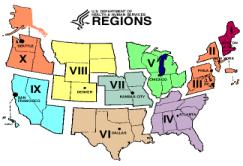
The Department of Health and Human Services maintains offices and staff in 10 different regions of the country. Dental consultants on staff are used to monitor contracts and interface with state agencies to provide technical assistance and support. Information about each regional office can be found online at www.hhs.gov/about/regions.
Indian Health Service Areas
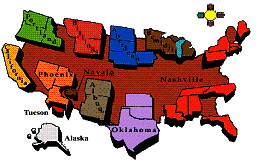
The Indian Health Service also maintains a regional focus through 12 Area Offices, although these regions do not conform to the HHS regions. The list of Indian Health Service Area Offices is on the agency Web site at www.ihs.gov. The role of the Area Dental Officer is to interface with tribes to assure that they have the funding, personnel, equipment and other resources necessary to deliver comprehensive, quality oral health services to their members. The Area Offices provide technical assistance, training, data management, program evaluation services, recruitment, and budget oversight to tribal and direct programs as well as work with other members of the Area Office team.
State Government
State Health Agencies may conduct a range of important oral health activities, many under the direction of an Oral Health Program or Office. Current lists of state oral health programs and their Web sites are maintained on the ASTDD Web site. Some oral health activities may be supported by Divisions of Maternal and Child Health, Aging Services, Primary Care, or Rural Health. Other Departments such as Education, Corrections or Developmental Disabilities/Rehabilitation may also provide or fund oral health programs or dental care services. A 1999 survey conducted by the ASTDD looked at existing infrastructure for state oral health programs and what is needed to maintain fully effective programs.
The report, Building Infrastructure and Capacity in State and Territorial Oral Health Programs, is available on the ASTDD Web site. Although the data change due to agency reorganizations or personnel changes, in 1999:
- 31 states and 5 territories had full-time dental directors
- 20 states had part-time or vacant positions
- About half of the states, with populations totaling 92 million people, had state oral health programs supported by budgets of $500,000 or less.
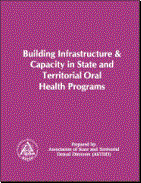 The report identifies characteristics of successful programs and 10 essential elements that would build infrastructure and capacity for oral health programs. These elements reflect the public health functions of assessment, policy development and assurance. Note that one of the HP 2010 objectives (21.17) seeks to increase the number of state and local dental programs with directors who have formal public health training, not just credentials in dentistry or dental hygiene. Monies to fund these programs generally are from the federal MCH Title V Block Grant, the Preventive Health and Health Services Block Grant, or from state general funds. Since July 2001, CDC has established cooperative agreements with a number of states and territories to strengthen their oral health programs and reduce inequalities in the oral health of their residents.
The report identifies characteristics of successful programs and 10 essential elements that would build infrastructure and capacity for oral health programs. These elements reflect the public health functions of assessment, policy development and assurance. Note that one of the HP 2010 objectives (21.17) seeks to increase the number of state and local dental programs with directors who have formal public health training, not just credentials in dentistry or dental hygiene. Monies to fund these programs generally are from the federal MCH Title V Block Grant, the Preventive Health and Health Services Block Grant, or from state general funds. Since July 2001, CDC has established cooperative agreements with a number of states and territories to strengthen their oral health programs and reduce inequalities in the oral health of their residents.
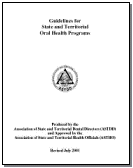 A companion document, Guidelines for State and Territorial Oral Health Programs, also developed in 1985 and revised in 1997 and 2001 by ASTDD (available on the ASTDD Web site), provides guidance for government officials and public health program administrators on essential public health services to promote oral health in the U.S. These guidelines are used by ASTDD to mentor new state dental directors and evaluate state and territorial oral health programs through a self-assessment process and on-site reviews by a team of consultants. The guidelines can be adapted for use by local and tribal oral health programs.
A companion document, Guidelines for State and Territorial Oral Health Programs, also developed in 1985 and revised in 1997 and 2001 by ASTDD (available on the ASTDD Web site), provides guidance for government officials and public health program administrators on essential public health services to promote oral health in the U.S. These guidelines are used by ASTDD to mentor new state dental directors and evaluate state and territorial oral health programs through a self-assessment process and on-site reviews by a team of consultants. The guidelines can be adapted for use by local and tribal oral health programs.
State Medicaid and State Children’s Health Insurance Programs may or may not be located in the same agency as the State Oral Health Program. There usually are Medicaid dental consultants who interface with practitioners and dental plans around reimbursement and policy issues. Over 40 million people (about 50% are children) had Medicaid coverage in 1999. Each state’s Medicaid program is unique, but the federal Early and Periodic Screening, Diagnosis and Treatment (EPSDT) program requires Medicaid coverage for treatment of any dental problem identified through an EPSDT medical or dental screening. Unfortunately private practitioner participation as Medicaid providers was only 28% nationally in 1999, ranging from 0%-100% participation in each state. Some State Children's Health Insurance Programs (SCHIP) provide funding for dental personnel and equipment outside traditional private office settings. In some cases, these organizations even provide funding or staff for school-based dental services. Many Medicaid and SCHIP agencies contract with dental insurance, managed care, and dental managed care organizations to provide dental services to Medicaid and SCHIP enrollees. A HRSA 25-page report, Opportunities to Use Medicaid in Supporting Oral Health Services, is available online at www.ask.hrsa.gov/OralHealth.cfm.
State regulatory boards for dental professionals set rules and regulations that govern the standards of practice. The board’s authority is limited to that granted by the state legislature and typically includes: 1) establishment of qualifications for licensure, 2) issuance of licenses to qualified individuals, 3) establishment of standards of practice and conduct, 4) taking disciplinary action against those who engage in misconduct, and 5) promulgation of rules to enable the board to perform its duties. Practice acts and licensure requirements for dental professionals vary by state, a situation that can impede professional mobility and distribution of the workforce to areas most in need. Some states allow licensure by credentials to individuals who already are practicing in another state where the licensure standards are similar, while others allow reciprocity to licensees from states with which they have formal reciprocal agreements. Visit the American Dental Association’s Web site for more information about state dental statutes and regulations. The American Association of Dental Examiners publishes Composite, a document that includes information about state boards’ structure and operation, licensee population, board disciplinary actions, and licensing requirements.
Dental Health Professions Schools
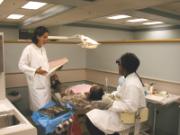 There are 55 dental schools (36 public, 14 private, 5 private-state related) and 254 dental hygiene programs throughout the nation. A variety of dental assisting and dental lab technician programs are available, primarily through community or technical colleges in local communities. A listing of US and Canadian dental schools, allied health programs, federal dental service programs, and hospital programs not affiliated with dental schools are listed on the ADEA Web site at www.adea.org. These programs provide significant influence on the oral health workforce in terms of numbers and types of professionals, translation of research findings, and provision of continuing education courses. Schools of dentistry and dental hygiene often collaborate with community-based oral health programs to provide dental care to underserved groups, especially where there is a high demand for services and an insufficient number or variety of providers.
There are 55 dental schools (36 public, 14 private, 5 private-state related) and 254 dental hygiene programs throughout the nation. A variety of dental assisting and dental lab technician programs are available, primarily through community or technical colleges in local communities. A listing of US and Canadian dental schools, allied health programs, federal dental service programs, and hospital programs not affiliated with dental schools are listed on the ADEA Web site at www.adea.org. These programs provide significant influence on the oral health workforce in terms of numbers and types of professionals, translation of research findings, and provision of continuing education courses. Schools of dentistry and dental hygiene often collaborate with community-based oral health programs to provide dental care to underserved groups, especially where there is a high demand for services and an insufficient number or variety of providers.
Dental residencies and graduate programs in a variety of specialty areas are administered through universities, hospitals, or public health agencies. Each year there are approximately 30-40 dentists enrolled in dental public health residency programs, but the program directors are having difficulty filling positions, as indicated in the following graph. Only 4% of public health schools include a department or program in Dental Public Health.Dental Insurance, Managed Care, and Dental Managed Care Organizations
Some dental insurance, managed care, and dental managed care organizations are involved in efforts to improve access to dental care. For example, Delta Dental Plan of California, which administers the fee-for-service Medicaid dental program in California, has an outreach unit that actively solicits provider participation and provides grants to community clinics for dental equipment and staff.
Dental insurance organizations and prepaid dental plans typically are regulated by state Departments of Insurance or Corporations. Many dental managed care plans belong to a national organization, the National Association of Dental Plans. When these companies also are nonprofit organizations (e.g., Delta Dental), they may be required by their charters or by state or federal law to donate a portion of their revenues to charitable or public service types of projects. The Washington Dental Service Foundation is an example of how one Delta Dental plan has used its revenue to support a variety of dental public health activities, including dental clinics, a state oral health coalition, and most recently, a major initiative called "Watch Your Mouth" intended to raise public awareness of the importance of improving children's oral health.
Local Programs
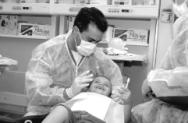 The majority of dental care provided to the US population is through private practice dental offices. Most of these are small general practices of less than 3 providers (dentists and dental hygienists), rather than group practices or specialty practices. Nationally the supply of dentists per population is decreasing, partly due to a decline in the number of dental school graduates and aging of the dental workforce.
The majority of dental care provided to the US population is through private practice dental offices. Most of these are small general practices of less than 3 providers (dentists and dental hygienists), rather than group practices or specialty practices. Nationally the supply of dentists per population is decreasing, partly due to a decline in the number of dental school graduates and aging of the dental workforce.
Dental safety net programs expand services to populations who do not or cannot obtain care n the private sector. Many of these programs are community clinics administered by local or county health departments, tribal programs or the Indian Health Service; those receiving other federal funds as federally qualified health centers (FQHC) or "look-alikes"; independent non-profit dental clinics; school-based or school-linked health centers; hospital-based services; dental school satellite clinics; mobile or portable dental programs; programs administered by non-profit community organizations such as Volunteers in Health Care, religious organizations (e.g., United Health Ministries); or worksite programs. While many community programs provide restorative dental care, others may provide only preventive services, screening and referral, dental health education, or case management. Workforce shortages from recruitment and retention problems are occurring in many of these programs, thus hampering efforts to meet local and national objectives. For example, the vacancy rate for dental providers in American Indian/Alaska Native programs is 22% in 2002. Some rural clinics have been trying to recruit dental providers and staff for over three years.
The National Association of County and City Health Officials (NACCHO) estimates there are about 2900 local health departments (LHD) nationwide. Local health departments vary considerably in organization, type and number of staff, specific services provided, etc. Often the number of LHDs in a state has no direct relationship to geographic or population size. For example, California is one of the largest states for both parameters, yet only has about 60 county or city health departments, while Massachusetts, one of the smaller states, has over 325 LHDs. Most LHDs are entities of county government that derive authority from both state and local statutes. Eighty-one percent of LHDs report to local boards of health. The local boards of health belong to a national organization, the National Association of Local Boards of Health. These boards establish general public health policies or provide advice on such policies. They provide vital roles as 1) links to the community; 2) advocates for developing programs within the LHD; and 3) liaison to the state legislature. They can advocate in ways the LHD employees cannot. (Much of this information was gleaned from an excellent reference, Local Public Health Practice by Mays, Miller and Halverson, that is cited in the reference list). Table 2.2 provides a summary from the same reference of the percentage of LHDs providing various types of services (these statistics are derived from various surveys so they may be from different years.)
Table 2.2. Percent of LHDs Offering Various Services | Dental services | 44% |
|---|
| Community outreach and education | 88% |
|---|
| Tobacco use prevention | 67% |
|---|
| Well child care | 79% |
|---|
| WIC providers | 75% |
|---|
| Injury control | 49% |
|---|
| School-based clinics | 33% |
|---|
| School health programs | 65% |
|---|
| Community assessment | 76% |
|---|
| Epidemiology and surveillance | 83% |
|---|
A variety of local funds are used for oral health programs, including community block grant funds, local assistance funds, or grants from local philanthropic organizations or businesses. In a study by NACCHO in the early 1990s, LHDs nationwide received 34% of their funds from local government, 40% from state government (includes federal funds), 7% from Medicaid services, 3% from Medicare services, and 16% from other sources such as private foundations. Communities also can apply for other state funding such as the tobacco master settlement agreement or earnings from tobacco taxes.
Numerous advocacy groups and local coalitions have emerged to address disparities in health and oral health care. They provide much needed lobbying efforts and leveraging of resources, as well as outreach and education to underserved populations. Some have a limited focus such as young children, the homeless, elders or people with developmental disabilities, while others represent more broad-based coalitions for a geographic region, e.g., Rural Health Councils. In the past few years, a number of dental summits have been convened to address dental access issues (see partial list on Page 10 of the Resources section for this chapter - reports from some available are online at www.mchoralhealth.org). Many of these summits resulted in ongoing oral health coalitions. The next section discusses the roles of coalitions and partnerships in relation to HP 2010 initiatives and other oral health activities.
Creating Coalitions and Partnerships for HP 2010 Initiatives
Models for Planning
The success of the Healthy People Initiative has been the fostering of flexibility and innovation within a general framework. Each state and community has different political realities, infrastructures, population groups, health needs, and ways of getting things done. A number of planning structures have been used to guide the process for creating HP 2010 plans and oral health plans. Some plans have been led by a governor’s initiative or state legislation, some by health department leadership, and others by community coalitions. For example:
Louisiana passed a bill to create the Louisiana Healthy People 2010 Planning Council in the Department of Health and Hospitals, with funding for a paid staff person to assist the Council.
In Ohio, the Department of Public Health initiated a strategic planning process to strengthen Ohio’s public health system. This evolved into the Work Group on Healthy People Ohio.
A Florida statute requires the Department of Health to "biennially publish, and annually update, a state health plan that assesses current health programs, systems, and costs; make projections of future problems and opportunities; and recommend changes needed in the health care system to improve public health."
Diagrams of Maryland’s process and timelines are included in the Resources section.
In North Dakota a Healthy People 2010 oral health coalition evolved as part of the Chronic Disease Working Group for Healthy People 2000.
The Oral Cancer Consortium in New York-New Jersey consists of 22 dental institutions/organizations that are addressing the oral cancer objectives through community outreach and early detection.
The Arkansas Oral Health Program in the Department of Health recently received an Infrastructure Development grant from CDC. Some of the monies are being used to develop oral health coalitions and to hold a dental summit that will begin the process for oral health planning.
The Kentucky Dental Health Coalition began in 1990 as a collaborative effort between the University of Louisville School of Dentistry and the University of Kentucky School of Dentistry, and then incorporated as a non-profit organization in 1993. The membership and the board of directors have expanded over the years to include many other groups interested in promoting oral health. They have held a successful dental summit, conducted a statewide needs assessment and participated in the NGA Policy Academy.
The Maine Dental Access Coalition was convened in June 1997 as a collaboration between Maine’s Oral Health Program and the Maine Children’s Alliance. This ad-hoc group has grown to over 115 individuals representing themselves, dental and other health professional associations, community and state agencies, foundations, and other groups from around the state. The Coalition has served as a sounding board and advocate for ideas and strategies to improve access and for new legislation, sponsored a conference for community oral health coalitions, produced public education materials and convened a task force to coordinate early childhood caries prevention and intervention efforts. Support from the Office of Health Planning’s HRSA-funded Maine Oral Health Partnership Project provides paid staff support.
Four common planning models for HP 2010 initiatives are diagramed in the Resources section of this chapter. These represent state models but they can be easily adapted for territorial, tribal or community models. Community models are discussed in Healthy People in Healthy Communities, a booklet available on the Healthy People Web site. The booklet outlines the MAP-IT approach, (shown below) that mirrors the national Healthy People approach.
Mobilize individuals and organizations that care about the health of your community into a coalition.
Assess the areas of greatest need in your community, as well as the resources and other strengths that you can tap into to address those areas.
Plan your approach: start with a vision of where you want to be as a community; then add strategies and action steps to help you achieve that vision.
Implement your plan using concrete action steps that can be monitored and will make a difference.
Track your progress over time.
A similar approach called MAPP (Mobilizing for Action through Planning and Partnerships), promoted by the National Association of County and City Health Officials, is available online at www.naccho.org. The following nine communities are implementing the MAPP process to show how it can be used in a variety of settings:
- Amherst, MA
- Hartford, CT
- Columbus, OH
- Lee County, FL
- Mendocino, CA
- Nashville/Davidson County, TN
- Northern Kentucky District, KY
- San Antonio, TX
- Taney County, MO
A number of excellent references and resources are available for forming community groups, particularly coalitions and collaboratives. General references are listed in the Resources section. Two references specific to oral health include:
Community Roots for Oral Health. Guidelines for Successful Coalitions was developed by the Washington State Department of Health in March 2000 and has been used extensively in Washington and other states to create oral health coalitions. A few sample worksheets from this workbook are included in the Resources section of this and other chapters. (Workbook available online at http://www.cdc.gov/OralHealth/publications/library/).
Connecticut Community Oral Health Systems Development Project Guidelines is a manual that offers guidance in building collaborations, performing a community oral health needs assessment, and developing plans and proposals. (1-860-509-7809).
Examples of Other Oral Health Coalitions and Collaboratives
As of October 2002, more than 20 states have held dental summits, and more are planned to address dental access issues. Most states used a multidisciplinary planning group and then invited other stakeholders to a 1-2 day conference to discuss the issues and create task forces or workgroups to develop action plans. These summits have resulted in a number of positive outcomes that directly or indirectly address the HP 2010 objectives. Information about the summits can be obtained from the National Maternal and Child Oral Health Resource Center. In 2002 ASTDD, with support from HRSA and ACF, funded similar state/territorial oral health forums focused on Head Start/early childhood issues. A list of forums and primary contacts is on the ASTDD Web site.
Another initiative that is built on collaborative planning is the National Governors Association Oral Health Policy Academies. Three rounds of academies involving 21 states have been conducted since 2000, with each state receiving technical assistance and funding to create a State Action Plan to further oral health policies that address oral health concerns. A list of the participating states is included in the Resources Section, and additional information can be accessed via the NGA Web site at www.nga.org.
Oral Health America sponsors National Spit Tobacco Education Program (NSTEP) coalitions in about 20 states to provide oral exams, cessation counseling, public awareness activities and educational events with Minor League and Major League baseball teams. Information on this program is available online at www.nstep.org and would be useful in addressing the tobacco and oral cancer-related HP 2010 objectives.
Special Olympics Special Smiles is a dental screening, education and referral program that operates under the auspices of the Special Olympics Healthy Athletes Initiative. Athletes also receive free mouthguards for contact or high-risk sports at most locations. Special Smiles events are scheduled all around the country, and coordinated and conducted by groups of local dental professionals and students. The program offers Academy of General Dentistry and ADA recognized continuing education credits in exchange for professional participation. Oral health data collection is an important part of this program. Information on the program can be found online at www.specialolympics.org/special+olympics+public+website/english/initiatives/healthy_athletes/special_smiles/default.htm.
The following examples highlight how four states have used coalitions to further an oral health agenda.
Pennsylvania
In July 2000, the Pennsylvania Department of Health began a formal strategic planning process to improve oral health in the state and reduce oral health disparities. From September 1998 through October 2000 the first school oral health needs assessment was conducted on children in grades 1, 3, 9 and 11 in six health districts. Using the results of this assessment and other oral health data (e.g., BRFSS, Head Start, etc.) the Oral Health Program prepared a strategic planning "menu" of options to use in developing programs, policies and procedures to address oral health needs. Issues were organized using the 6 categories of health action from the Pennsylvania State Health Improvement Plan. This menu was presented to the Oral Health Stakeholders group, some of which are NGA Policy Academy team members, for prioritizing recommendations and action steps.
Contact Neil Gardner at ngardner@state.pa.us
The Colorado Commission on Children’s Dental Health, with support from the Governor and funding from the Anthem Blue Cross Blue Shield Foundation, began deliberations in May 2000 to study a set of key public policy issues for improving children’s oral health. The expected outcome was to provide recommendations on ways to improve the current system of dental care. The Commission made 9 recommendations and published a written report that was widely distributed and available on the Oral Health Program’s Web site. Three legislative and two budget initiatives passed in the 2001 legislative session that directly addressed 5 of the recommendations. With the addition of a dental benefit in SCHIP, a Dental Network Adequacy Workgroup was convened to address the legislative mandate, using some members of the Commission, some dental safety net providers, and the Colorado NGA Policy Academy team. Meetings began in October 2001 with the dental association, Medicaid program, School of Dentistry and NGA team to develop strategies for improving systems for serving low-income clients.
Contact Diane Brunson at diane.Brunson@state.co.us
New Mexico
The New Mexico Oral Health Collaborative was formed in 1999 and is composed of a number of American Indian (AI) community-based organizations in the Albuquerque metro area. In addition to assuring that the primary AI clinic remains open to provide vital dental care services, the Collaborative discussed other expansions and partnerships such as:
- Recruitment and retention of AI dental auxiliaries
- General Practice Residency and Advanced Education in General Dentistry programs
- Use of the operating room and anesthesiologist available through UNM for young children with complex dental needs
- Linking the UNM Dental Hygiene program with the AI dental clinic
- Sharing oral health promotion/disease prevention programs of the Albuquerque Area Dental Support Center with First Nations Healthsource
- Identifying and securing financing to support expanded services, particularly for diabetic patients.
The Collaborative is in the unique position of forming a program designed to promote an inclusive environment where communities and service providers participate in a cross-cultural learning process.
Contact Mary Altenberg at maltenberg@abq.ihs.gov
Alaska
Since 1970 the Alaska Native Regional Health Corporations have gradually contracted for management of the Indian Health Service (IHS) hospitals and clinics in regional hubs. In 1998, under self-governance authority, the 21 regional health corporations created the Alaska Native Tribal Health Consortium (ANTHC) in order to manage statewide health services. Currently, the Alaska Area has 21 dental clinics, managed by 14 different tribal organizations all represented by ANTHC. As a result of geographic isolation, lack of a State oral health program, vacant dentist positions, and high yearly dentist turnover in rural dental clinics, the oral health of Alaska Natives is far worse than the U.S. all-races oral health status. This oral health disparity became a priority with the ANTHC members and in May of 2000 a task force was established to address the issues of insufficient dental care in rural Alaska. This initiative resulted in an IHS Clinical and Preventive Support Center (Support Center) grant. The ANTHC Support Center will achieve its objectives by utilizing the federal authority to train Community Health Aides in expanded dental functions, thus creating the Dental Health Aide (DHA) program. DHAs will provide new village-based capability in primary dental care, including community education, preventive intervention, individual assessments, early referral of dental problems, and help to address Healthy People 2010 and GPRA objectives.
Contact Ron Nagel at rnagel@anthc.org
Roles and Responsibilities of HP 2010 Teams
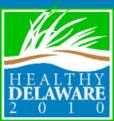 This section is derived from Delaware’s Healthy People 2010 initiative and offers an excellent framework for analyzing how teams can be formed to meet the needs and resources of your particular area. No matter what structure is selected, all team members should:
This section is derived from Delaware’s Healthy People 2010 initiative and offers an excellent framework for analyzing how teams can be formed to meet the needs and resources of your particular area. No matter what structure is selected, all team members should:
- Contribute personal and professional experience and expertise to the group
- Speak up for and faithfully represent community, professional, or constituency perspectives
- Identify work group decisions that may present a conflict of interest and abstain from committee votes on these matters.
Authority: Advisory vs. Steering Responsibilities
In any planning structure, participants should know:
- Who has an advisory role? Persons in an advisory role may provide informed input on topics such as the HP 2010 planning process, priority or focal areas, target populations, scope of objectives, marketing, and other aspects of the HP 2010 plan.
- Who has a steering role? Persons in a steering role navigate the course of the planning process, establish work groups, determine input processes, and make decisions about the content of the state plan.
- Who makes final decisions, weighing all input?
- Who will be held accountable for the plan and see the plan through?
Advisory Structure Options
- Single advisory group that meets throughout the process (multidisciplinary representation)
- Two or more advisory groups to ensure input from specific constituencies (e.g., geographic areas, racial and ethnic populations, age-related programs), periodically convened
- Consortium of various advisory groups, (e.g., maternal and child health, oral health)
- No formal advisory group, but planned events or activities to gain input from key constituencies (e.g., town hall meetings, focus groups)
Steering Structure Options
- Steering group with full authority to develop and adopt the HP 2010 plan
- Steering group with significant authority to develop the HP 2010 plan, subject to the final approval of the governor, state health officer, mayor, or others
- Steering group with specific authority over certain tasks (such as the development of objectives), with other tasks (such as marketing and publication of the plan) under the authority of the state health agency, governor's office, or another organization
 Distributing the Work
Distributing the Work
The following options may apply to distributing the work of advisory groups or steering groups, according to the planning structure you have chosen.
Delegation Options
- All the work is done during steering group meetings
- Members are divided into work groups or subcommittees
- Work groups are established and chaired by a steering group member, with membership open to non-steering group members who have expertise or have expressed an interest
- The steering group charges the state health agency or another official group with forming work groups as needed
Work Group Options
Number
- Limited number of work groups built around specific focus areas or objectives
- Unlimited number of work groups that expand as the need arises
Organization
- By focal areas (e.g., access, oral health, infrastructure), so that work groups are responsible for all aspects of developing the plan for their areas of expertise
- By functions (e.g., objectives, strategies, marketing, public input), so that work groups oversee one aspect of the process for all focal areas
- By populations (e.g., grouped by life stage, gender, race/ethnicity, people with disabilities)
- By target audience (e.g., business, government, community organizations)
- Combination of work group types
Communication
- Work groups operate independently, reporting only to the steering group
- All work groups are periodically convened with steering and advisory groups, sharing progress and discussing priorities of common concern
- Certain related work groups periodically meet together
- Staff interactions, minutes and other materials, Web sites, listservs or electronic newsletters facilitate communication among groups
Staffing Options
- Members or their respective staffs do all the work
- Agencies and organizations jointly support the process
- Umbrella agency or organization shares technical support (e.g., data, program expertise, or references) and administrative support responsibilities with members
- Umbrella agency hires contractual staff for administrative or technical support
Public Input and Involvement
 Options
Options
- Public meetings with formal testimony
- Public meetings with informal discussion with steering committee members
- Public meetings with breakout rooms for structured input or activities
- Requests for specific input or comment via e-mail, Web site, fax, or mail
- Surveys
- Key informant interviews
- Focus groups
- Internet discussion groups
The following examples demonstrate some models that incorporate many of these options.
The Governor’s Task Force for Healthy Carolinians appointed five committees to develop the North Carolina 2010 Health Objectives: Maternal and Young Child, Child and Adolescent, Adult, Older Adult, and Community Health. Each committee set its own agenda and determined subject areas for study and discussion. Experts were invited to present detailed information about 1) the issues, problems, and determinants/risk factors; 2) data that demonstrated problems and identified the disparities; and 3) solutions - resources that exist, resources and policies that are needed. Governmental and other agency representatives, university faculty and research center staff, advocacy groups, and healthcare practitioners provided much guidance in developing the health objectives. Oral health objectives emerged from three of the committees.
The District of Columbia Department of Health oversaw the planning process for their Healthy People 2010 initiative, which was coordinated by the State Center for Health Statistics. A planning group with work groups and program liaisons was established. Citizen participation was solicited via committees and advisory groups and in three public hearings. The final plan was submitted to the Director of the Department of Health and to the Mayor. Pediatric Dental Health was included as one of 21 focus areas.
Alaska posted their healthy Alaskans 2010 chapter reviews on its Web site to solicit feedback before being finalized. Oral health emerged as one of the health goals and is written as a chapter. Alaska has also created a listserv for continuing discussion.
Approximately 550 Iowans representing more than 200 separate organizations, working in 23 chapter teams, developed the HP 2010 objectives.
West Virginia used 30 workgroups and over 300 people to develop their HP 2010 objectives.
Oral Health 2000 was established as a committee of the Connecticut State Dental Association in 1993. Ultimately this group evolved into Oral Health 2010 and became an independent advocacy group with 501c3 status. Partnerships have been established with the Connecticut Department of Health to develop a train-the-trainer curriculum on oral health, and with the Hartford Health Department to collaborate on local action.
Who Should Be On the Team?
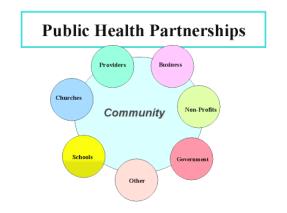
Partnerships for the HP2010 initiative are necessary because no one agency or organization has all of the necessary resources, experience, expertise, credibility, or relationships to initiate and sustain such a broad-based effort. An article by Green, Daniel and Novick in Public Health Reports, (see Reference list) suggests that partnering:
- Prevents tunnel vision
- Enables participation without overburdening one individual or agency
- Creates critical mass for empowerment and action
- Minimizes duplication of effort and resources - acts as a strategy to mobilize and leverage resources
- Allows intervention at multiple levels to initiate change.
How many partners are enough? How many are too many? The number and type of people on the team will in part be determined by the planning structure and the number and type of resources contributed by organizations or government agencies. As the group becomes larger there is a trade-off in terms of the effort required to manage the increased numbers and complexity.
A multidisciplinary group that represents different viewpoints and types of expertise is crucial to developing scientifically sound, realistic and culturally acceptable objectives and action plans.
As the team moves forward in its task, workgroups or other smaller divisions are more appropriate for detailed planning and implementation. Workgroups that focus on oral health objectives should not just include dental professionals; other health professionals, consumers and advocates may have different concerns and viewpoints. Involving people with diverse viewpoints at the outset will help to disclose these early in the discussions and will foster ownership of the process by the entire group. A number of community networks such as local interagency councils exist to address cross-cutting issues; these may be helpful for identifying partners.
On a national level, tribal leaders are proposing a collaboration among AI/AN tribes, states, Indian Health Service, HRSA, USDHHS, NIDCR, CDC, and the private sector to reduce oral disparities throughout Indian Country. This would include recommendations for increasing involvement and partnerships at the tribal and community level.
On a state level, lists of North Dakota HP 2010 Oral Health partners and members of the Missouri Oral Health Coalition are included in the Resources section as examples from states that have active and successful coalitions.
The Dental Directors/Chiefs for the nine US affiliated Pacific territories (jurisdictions) have formed the Pacific Basin Dental Association as a starting point to pull in other partners such as Head Start grantees. They recently received funding to convene a Head Start oral health forum for the Republic of Palau, Pohnpei and American Samoa to address oral health issues such as early childhood caries.
Resources to Identify and Invite Partners
Two worksheets to help identify potential team members are included in the Resource section. Recruiting Coalition Members and Oral Health Coalition Contact List are taken from the previously referenced workbook, Community Roots for Oral Health Guidelines for Successful Coalitions.
Delaware used a number of unique methods for their Healthy People 2010 initiative. One example is a two-page marketing/recruitment tool called Partnership Opportunities (copy in the Resources Section). It is a checklist of the various activities where the planning team needs assistance, with a contact person listed. This outlines a broad array of activities and allows people to select the type and level of involvement they wish to have. It can easily be adapted for an oral health workgroup. Two other tools in the Resources section, a Chamber of Commerce Member Questionnaire and a Steering Committee Survey, ask for valuable input to guide the entire HP 2010 process.
Partnerships for a Healthy Workforce has produced a publication, Healthy Workforce 2010, An Essential Health Promotion Sourcebook for Employers, to help solicit support from the business community. The document is online at www.prevent.org/images/stories/Files/publications/Healthy_Workforce_2010.pdf  . Although oral health is only briefly mentioned in the booklet, supplemental materials could be given to bring members of the business community into oral health coalitions.
. Although oral health is only briefly mentioned in the booklet, supplemental materials could be given to bring members of the business community into oral health coalitions.
 What are Some Tools to Assure Successful Teams and Team Meetings?
What are Some Tools to Assure Successful Teams and Team Meetings?
Community partnerships imply a "coming together" for a common purpose. Collaboration occurs among people, however, not among institutions. Collaboration is a means to an end, not an end in itself.
Two tenets of community partnerships are:
- Mutual trust is based on openness and equal opportunity for all members, and
- Interdependency is based on reciprocity - everyone gives and gets something.
Common pitfalls and challenges, as outlined by Berkowitz and Wolff in The Spirit of the Coalition (see Reference list) are listed in the box below.
Common Pitfalls and Challenges of Coalitions
- Failing to engage, trust and involve members of the community (consumers)
- Lead agencies retaining too much control over the membership and process
- Everyone protecting their own "territory"
- Avoiding meaningful action - spend time just talking or complaining about lack of resources
- Weak leadership
- Becoming overwhelmed and losing "balance"
- Inability to maintain members’ motivation and faith in the cause
A handout, Definition of a Team, (see Resources section, Page 21) was used by Iowa during their Healthy People 2010 planning process at the first team meeting. Two resources adapted from Healthy Iowans are included in the Resources Section to help meeting facilitators or team leaders. Ground Rules covers a shared set of norms that can be used to guide a team’s behavior. It is helpful to present ground rules at the beginning of the meeting, and if there are additions, get participants’ buy-in, and check in during subsequent meetings to make sure the ground rules are still being followed. Guidelines for Productive Meetings discusses use of agendas, facilitators, minutes, evaluation and timing.
Tips for Getting Your Team Started
Someone needs to be in charge of meeting preparation, especially the logistics and how to create a successful environment where everyone will feel welcome and their opinion valued. Make sure assignments are made for timekeeping, taking and distribution of minutes, etc.
Introducing members via ice breakers, biosketches or verbal introductions: sharing biosketches before the first meeting will reduce the time needed for introductions during the first meeting and will allow more time for team building activities.
Set aside a time at the beginning for sharing expectations and clarifying which ones are not appropriate for the timeframe or purpose of the first meeting; check back at the end of the meeting to see which expectations have been met and which steps need to be taken.
Determine a process for decision-making. Will decisions require a consensus or a majority vote? What group process techniques might be helpful (e.g., nominal group process technique)?
Scope of the initiative: make sure everyone knows the scope of activities and any limitations, e.g., statewide? All ages?
Potential roles, responsibilities and expectations for members: everyone will have different levels of involvement and roles; presenting the options at the beginning lets people decide what responsibilities they want and are able to assume.
Timelines: discuss the entire timeframe for the HP 2010 initiative and then establish more short-term timelines as you go.
Resources: review resources already available and ones that will be needed.
Communication tools: brainstorm how communication among team members and with individuals and organizations outside the group will be handled and who will be responsible for overall communication.
One important step for any team engaging in a planning process is identifying assets and resources that will guide the selection of priorities, formulation of objectives, and implementation of interventions for achieving goals. This process will increase the efficiency of planning efforts, help prevent duplicative efforts, and increase awareness of potential barriers and new resources. A useful tool for facilitating this process is the SWOT worksheet found in the Resources section of this chapter.
SWOT outlines potential:
- Strengths
- Weaknesses
- Opportunities
- Threats.
The Reference list in the Resources section includes other helpful books and articles on community coalitions and collaboratives. One additional comprehensive tool is the Community Toolbox, produced by the Workgroup on Health Promotion & Community Development at the University of Kansas, and available online at http://ctb.ku.edu/en/.
The next chapter will provide examples of specific strategies for setting health priorities, implementing national HP 2010 oral health objectives or developing state or community ones, and obtaining data for baselines and targets.